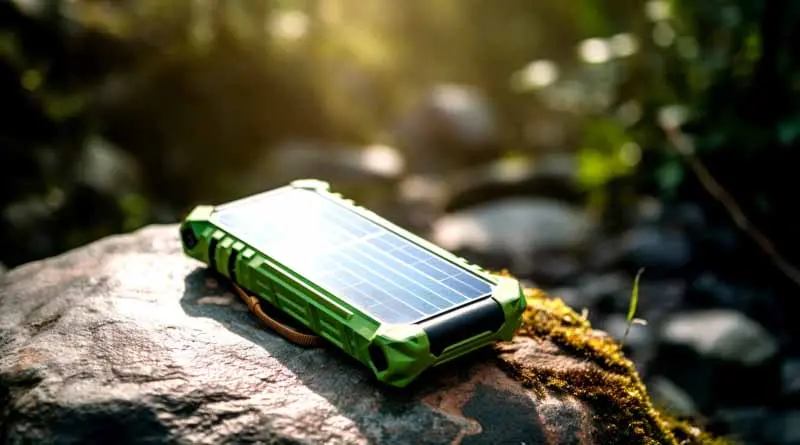
Solar Chargers: Harnessing The Sun To Power Your Adventure!
When you’re camping under the big, open sky, keeping your electronics like phones and cameras charged is important. Solar chargers are great for this, especially when you’re out in the clear sunshine. These chargers are easy to carry around and are good for the environment because they use sunlight to make electricity.
How Do Solar Chargers Work?
Solar chargers have special parts called photovoltaic cells that turn sunlight into electricity. When you put them in the sun, they make an electric current that can charge your devices or fill up a battery for later. These chargers have gotten really good at working even when the sunlight isn’t perfect, thanks to new technology.
Picking the Right Solar Charger
It’s important to choose a solar charger that works well with your devices. You want one that connects easily and charges your electronics without any problems. Here’s what to look out for:
Common Connectors:
- USB-A: This is the usual USB port that works with many cables you might already have. It’s good for charging things like smartphones, tablets, GPS devices, and cameras.
- USB-C: This newer kind of USB can do more than the older kinds. It charges faster and is becoming common in new devices.
- Micro USB: A lot of devices still use this, like some cameras and speakers.
- Mini USB: Not as common, but you might find it on some older devices.
What Your Devices Need:
- Smartphones and Tablets: Usually, smartphones need chargers that can do at least 1 amp (1A), and tablets might need 2.1 amps (2.1A). Some solar chargers have multiple ports to let you charge more than one device at a time.
- Cameras: Some cameras can charge with USB, but others might need special adapters.
- Laptops: These need more power, so you need a stronger charger, maybe one that offers special features for laptops.
Making Sure It Fits: Before you buy a solar charger, make sure it has the right kind of connectors for your devices. You should also check that it gives the right amount of power (volts and amps) that your devices can handle.
How Much Power Do You Need?
When you choose a solar charger, think about how much power it can give. The power is measured in watts (W).
- For simple camping needs, like charging a phone or camera, a 10-20 watt charger is usually enough.
- If you have lots of devices, or need to charge something big like a laptop, you might need a charger with more power, like 30 watts or more.
Carrying Your Charger: Since you’ll be carrying this charger while hiking or moving around, it should be light and not too big. Look for chargers that are designed to be easy to carry, maybe ones that fold up or are made from lightweight materials.
It Has to Be Tough: Your solar charger needs to be tough enough to handle being outside. It should be able to deal with water (like rain), not break if it gets dropped, and not get ruined by dirt or sand. Some chargers are even made to be okay if they get a little wet or dirty.
Using Your Charger: To get the most from your solar charger, put it where it can get lots of sunlight. If it’s partly cloudy or you’re using the charger in the morning or late afternoon, it might not work as fast.
Solar chargers are really helpful for keeping your gadgets working while you’re camping. They let you stay connected, safe, and able to use things like your phone’s GPS or camera without worrying about running out of battery. Plus, they’re good for the planet because they use the sun, which is a clean energy source.






